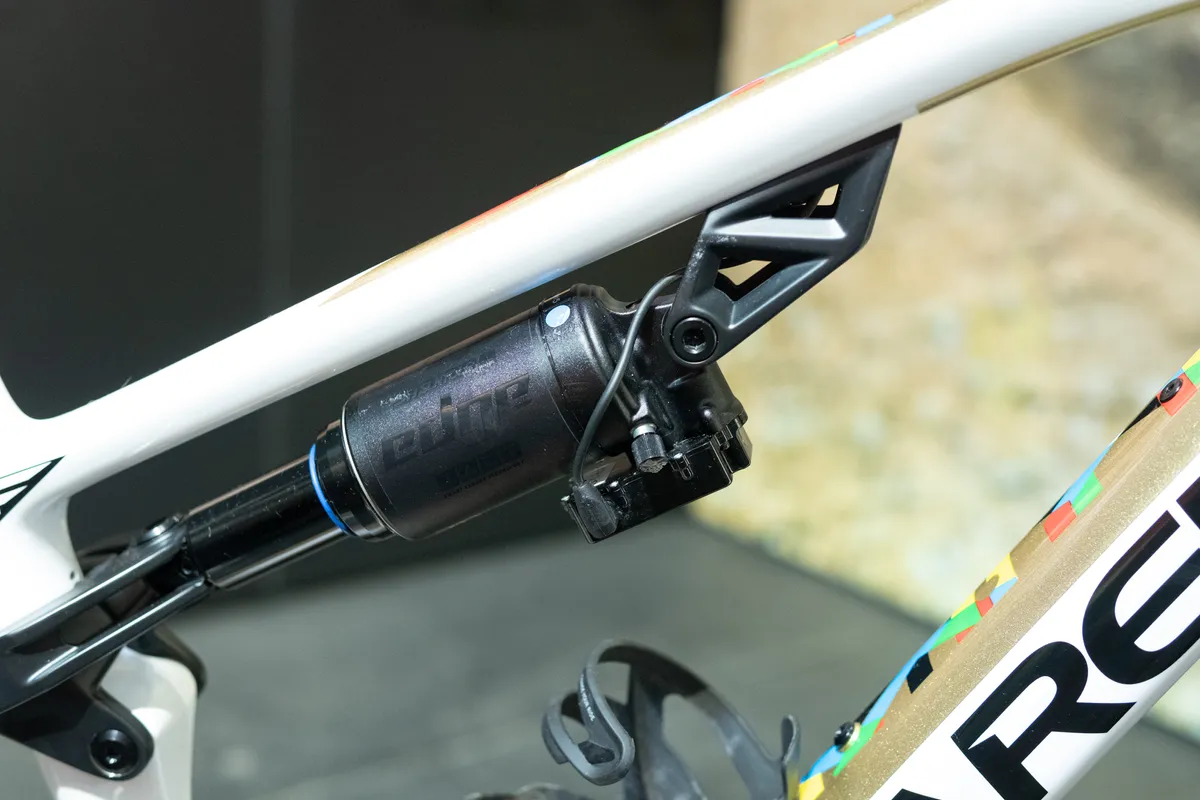As it's an Olympic year, plenty of juicy XC mountain bike tech has been released, with top brands and riders eyeing a gold medal in Paris.
Cross-country mountain bikes are now more efficient and capable than ever, with many bikes knocking on the door of trail bikes.
Looking deeper, key trends can be spotted across rider setups and new bikes.
Here are our top tech trends that will define mountain bike racing at the 2024 Paris Olympics.
Electronics will be everywhere

While electronics on bikes aren't new, they initially made a greater impact on road bikes.
Electric components have since proliferated on cross-country bikes, starting with electronic drivetrains, and now with electronically-controlled suspension dampers.
Some frame manufacturers have gone as far as designing their competition-level bikes to be electronic drivetrain-specific, as is the case with the latest Specialized S-Works Epic.
We expect all SRAM-sponsored riders will ride AXS Transmission drivetrains (although Shimano-sponsored riders will still use mechanical XTR).

We expect many riders will also run RockShox's fully automatic Flight Attendant suspension lock-out and control system.
This uses sensors on the fork, crankset and shock to automatically change the shock and fork's ramp-up, firming it up on climbs for increased pedalling efficiency.
Rockshox isn't the only brand messing around with electronics.

SR Suntour has been using its Tact system for a couple of years on Tom Piddcock and Pauline Ferrand-Prevot's bikes. Meanwhile, Fox’s Live Valve technology is well-established, but rarely seen in XC events.
BMC has also been spotted running Öhlins electronic suspension with a large control module connected to the team's TXC1 shocks and RXC34 forks.
Expect more travel and bigger forks

As race circuits have become more technically demanding, most riders have moved away from 100mm, 32mm stanchioned forks to 120mm, 34/35mm stanchioned forks
Narrower fork stanchions are often lighter but they're more flexible, resulting in less accurate handling.
Chunkier forks may weigh up to 200g more, but riders value the increase in travel and steering precision on rougher descents.
Dropper posts dominate

Dropper posts were rarely used as recently as five years ago.
Nowadays, you'd struggle to spot a fixed seatpost, with droppers almost universally accepted by XC racers.
The adoption of dropper posts has, in part, pushed modern cross-country course design – large drops, jumps and rock gardens are considerably less terrifying with your saddle out of the way.
Larger volume tyres and inserts are the norm

The widely-held assumption that wider tyres are efficient has mostly died out.
While narrower tyres still have a place in wet conditions, where thick mud can clog chainstays, wider tyres offer significantly increased traction and damping.
In addition to growing in width, cross-country racers now generally prefer tyres with more aggressive treads and increased puncture protection.
Increasing rotating weight was once viewed as sacrilegious, but increased protection makes tyres more resilient and capable than before.

Many riders use tyre inserts to fend off pinch-punctures, which will spell the end of any race run.
These systems also offer run-flat ability, meaning you can still press on if you puncture.
